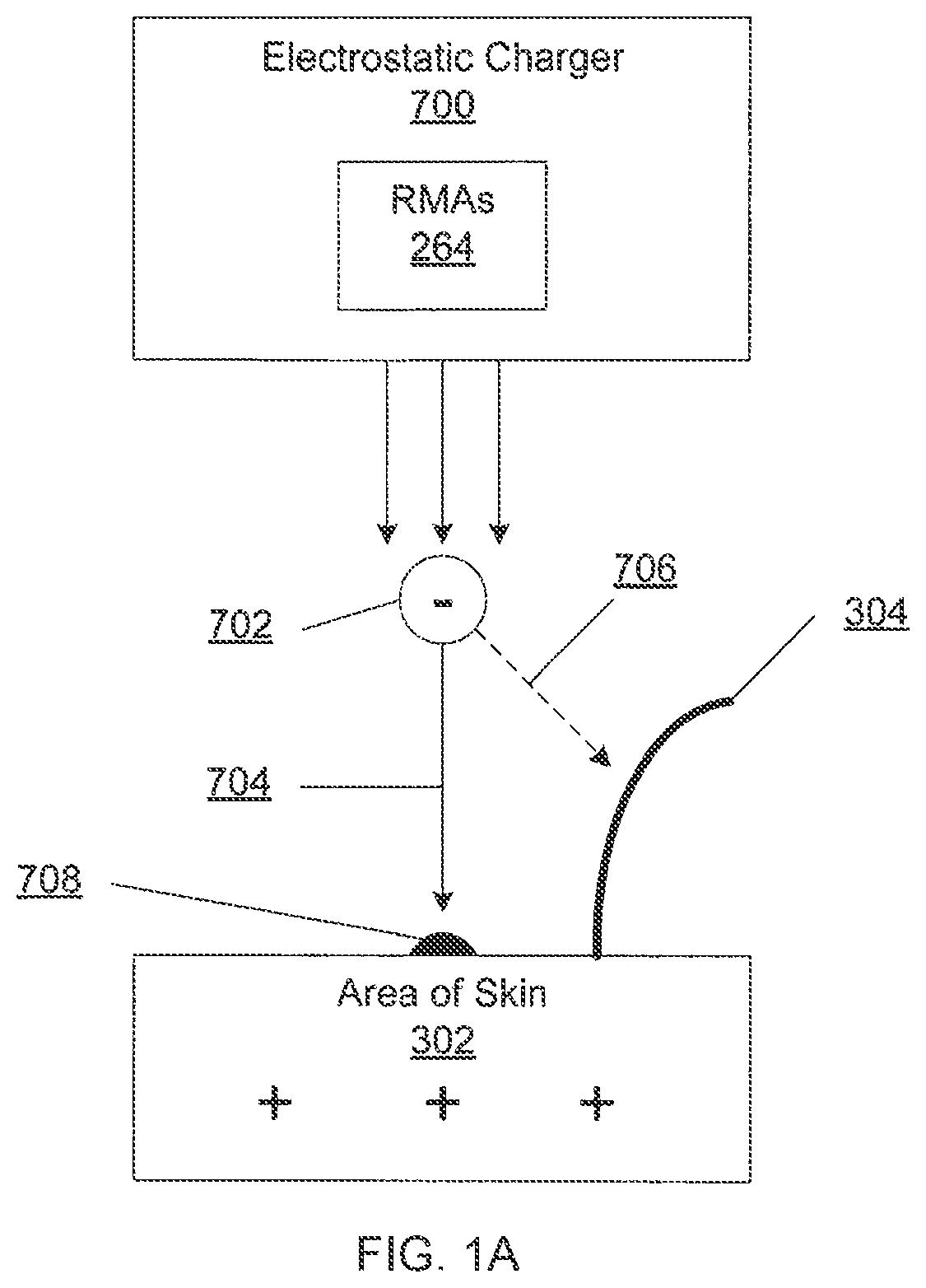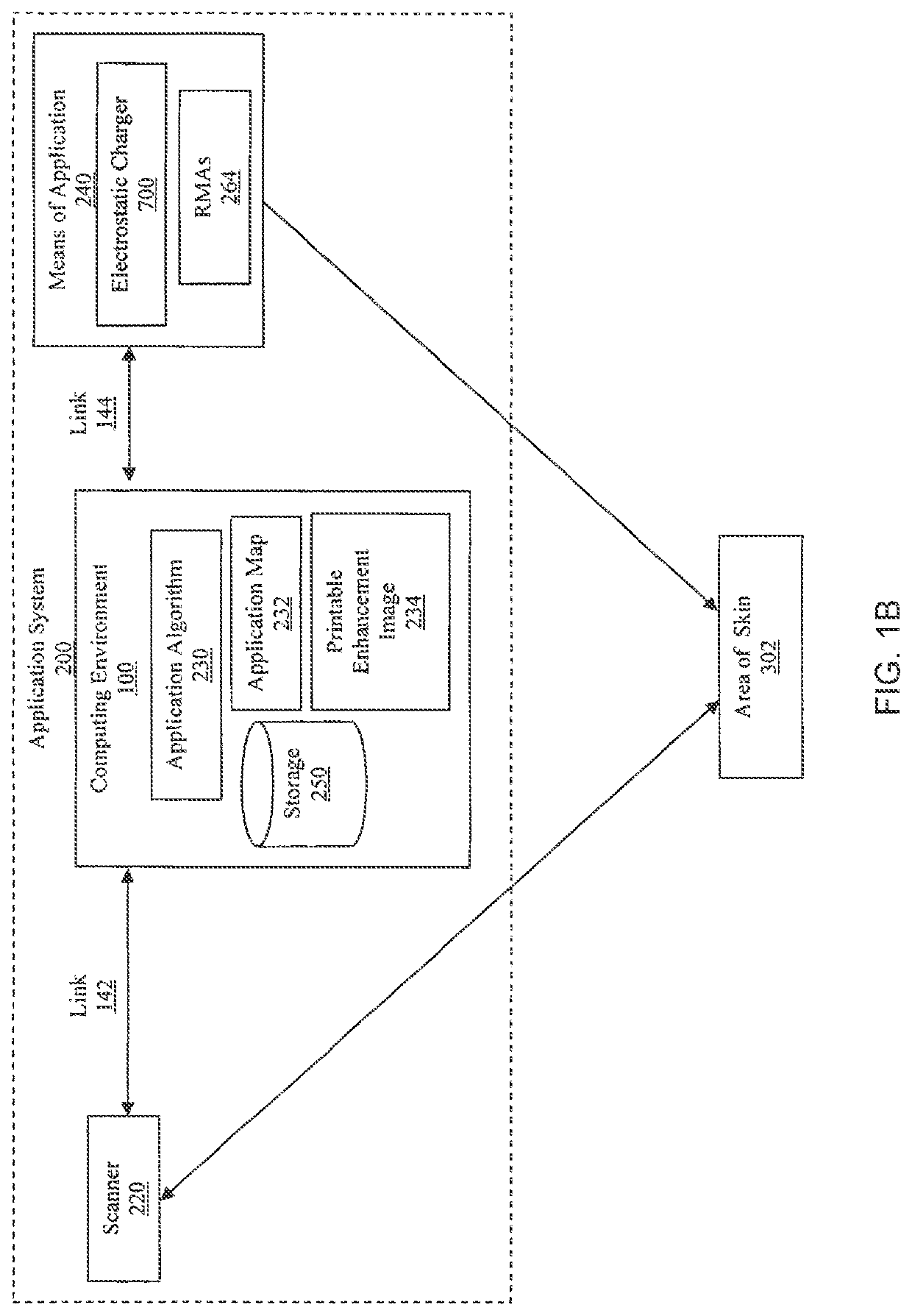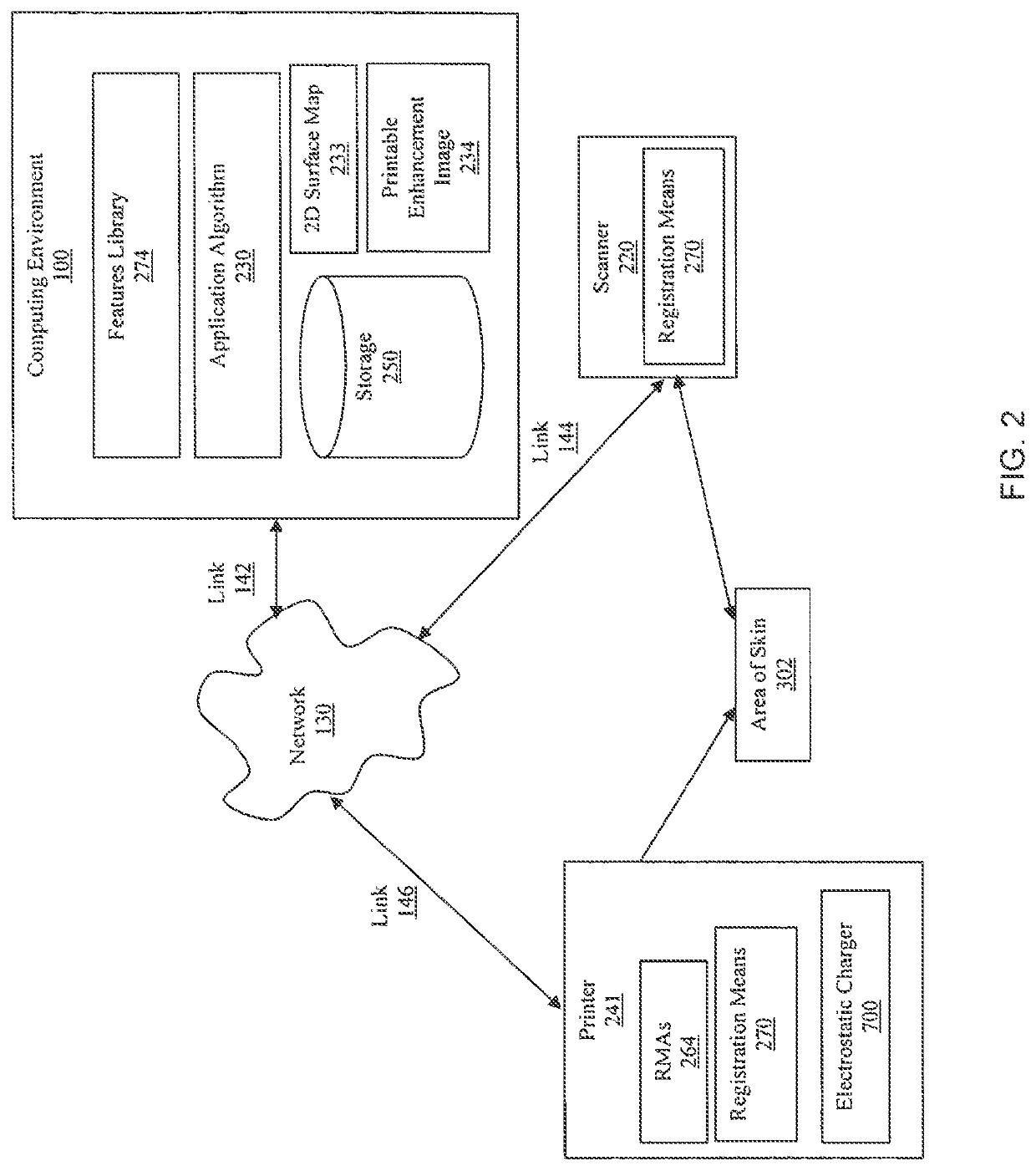System and method for applying a reflectance modifying agent electrostatically to improve the visual attractiveness of human skin
a technology of reflectance modifying agent and electrostatic application, which is applied in the direction of liquid supply arrangement, diagnostics, printing, etc., can solve the problems of poor skin appearance, laborious, expensive, and sometimes harmful, and the manual application of cosmetics to human skin areas containing human hairs is often difficult to achieve easily, precisely, and effectively. , to achieve the effect of softening or eliminating the perception of skin roughness
- Summary
- Abstract
- Description
- Claims
- Application Information
AI Technical Summary
Benefits of technology
Problems solved by technology
Method used
Image
Examples
application example
[0565]For example, a user could move the application device 246 over his or her face and have RMAs 264 applied as a form of makeup to enhance the attractiveness of the face. These RMAs may comprise transparent dyes, or inks, or pigments that would even up the skin tone while retaining desirable details like beauty moles, add reddish color to cheeks, and hide flaws and scars in the skin, greatly enhancing the attractiveness of the skin to the human eye. Typically, in an embodiment the user would close his or her eyes and mouth to prevent exposure of them to the RMAs 264. In another embodiment the system would use feature identification to recognize sensitive areas such as eyes and restrict itself from applying RMAs 264 to those sensitive areas.
Touchups
[0566]Once a 2-D surface map 233 and a printable enhancement image 234 for that face has been stored, they can be used repeatedly to quickly apply the RMAs 264 to the face with the application device 246, for example for quick daily cos...
PUM
 Login to View More
Login to View More Abstract
Description
Claims
Application Information
 Login to View More
Login to View More - R&D
- Intellectual Property
- Life Sciences
- Materials
- Tech Scout
- Unparalleled Data Quality
- Higher Quality Content
- 60% Fewer Hallucinations
Browse by: Latest US Patents, China's latest patents, Technical Efficacy Thesaurus, Application Domain, Technology Topic, Popular Technical Reports.
© 2025 PatSnap. All rights reserved.Legal|Privacy policy|Modern Slavery Act Transparency Statement|Sitemap|About US| Contact US: help@patsnap.com



